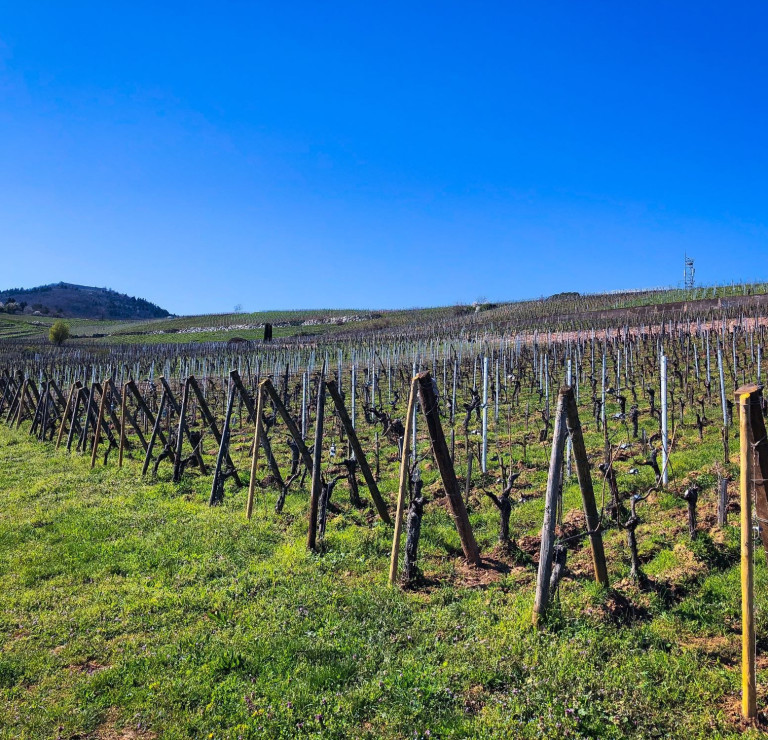
Technical presentation
| Bottling : | August 2018 |
|---|---|
| Acquired alcohol : | 12,7° |
| Residual sugar : | 62 g/l |
| Total acidity : | 2.1 g/l H2SO4 (3.2 g/l Acide Tartrique) |
| pH : | 3.8 |
| Yield : | 21 hl/ha |
| Optimum tasting : | 2022-2047+ |
| Average age of vines : | 66 years |
| Terroir : | Grand Cru Hengst |
| Sweetness index : | 5 |
| Soil : | Calcareous Marl from the Oligocene period, South/South East facing, medium/steep slope |
Description of the wine Gewurztraminer Grand Cru Hengst 2017
This wine from the Grand Cru Hengst is produced from two very old vineyards, one planted by my grand father Emile in 1948 and the other one was purchased in 1978 from an old winegrower who couldn’t remember when it was planted, but it was ‘well before WW2’…. Even more than their age, it is the selection of grapes that is spectacular and rare nowadays, compared to the modern clones of that grape, so far away in taste and quality potential. Gewurztraminer and Hengst make one, it is a unique and perfect marriage, made possible by this clever and knowledgeable selection made precisely for this place. All clonal plantations made in the Hengst after were pulled out recently. They never were able to produce a wine that could compare with the older ones. Gewurztraminer is in fact a red wine, hiding in a white (well, gold) livery and with some sweetness. The iron rich, red coloured marl soil of the Hengst bring power, tannic structure and nobility to this great grape variety, to often criticized for its varietal expression. The 2017 production is small, was made from very healthy crop and shows beautiful potential.

Tasting notes
03/2019 : Yellow gold colour. The nose shows real richness and density that will be confirmed on the taste. Aromas of ginger bread, cinnamon, honey and pepper bring an extra dimension. The absence of noble rot allows to keep an elegant, almost delicate, palate but most of all, a purity that only limestone can bring to this grape. The mouth is soft, long, round, well balanced, showing great harmony. There is generosity on the finish that hides the tannic structure, so well needed to guarantee a long ageing potential.

The Hengst Grand Cru of Wintzenheim
The Hengst was first mentioned in the 9th century in an endowment of the Murbach Abbey. The lord of Haut Landsbourg as well as the bailiff of Kaysersberg shared the feudal rights up to the Great Revolution, whilst various noble families, abbeys and the bourgeoisie of Colmar exploited important parcels.